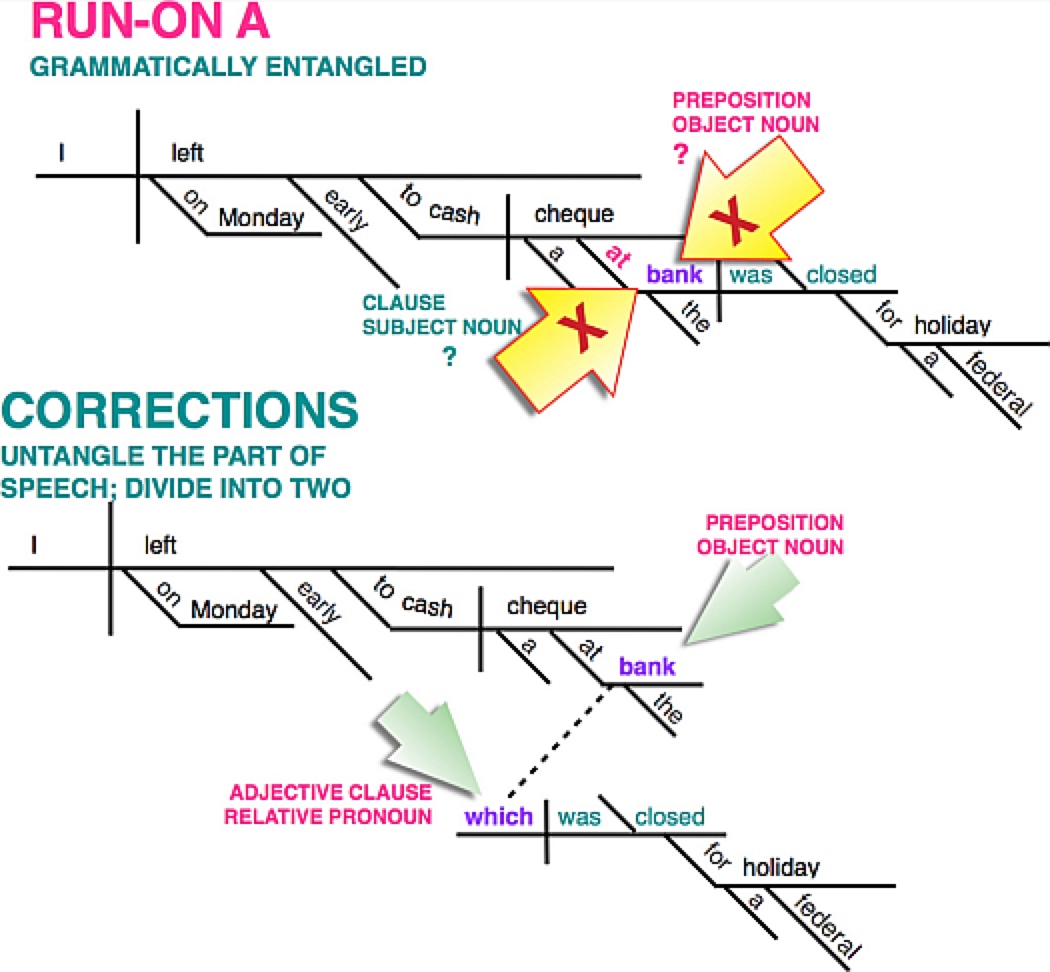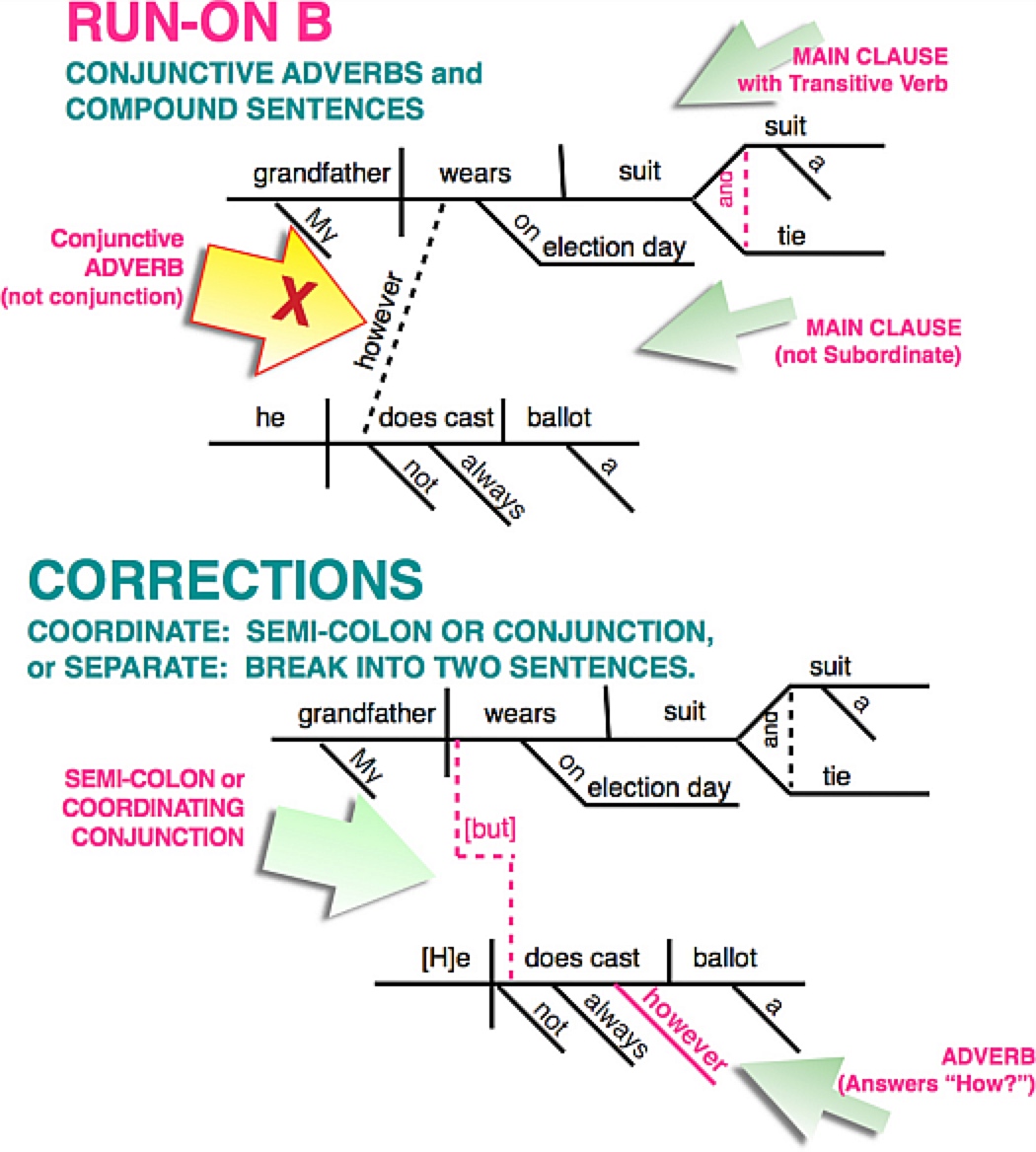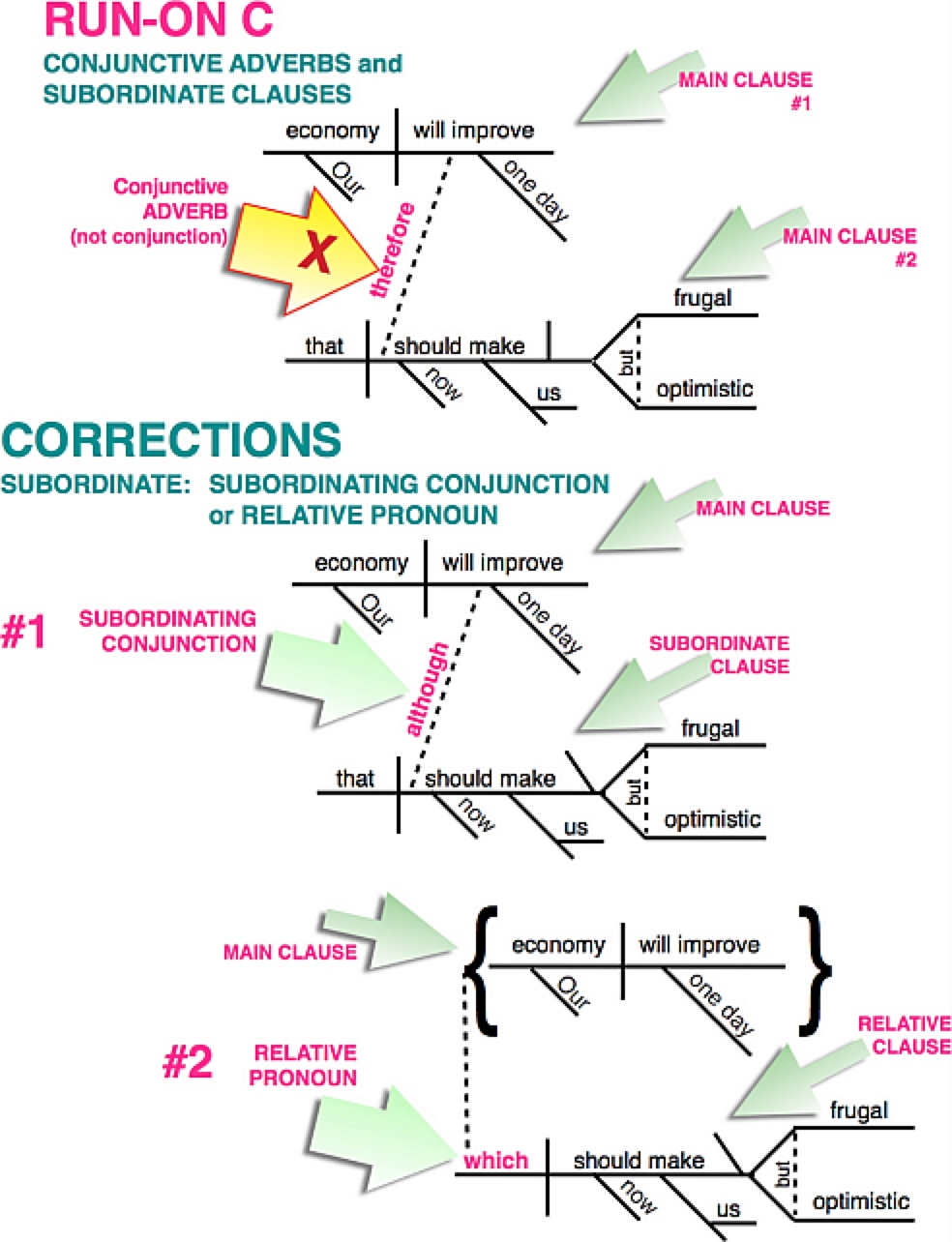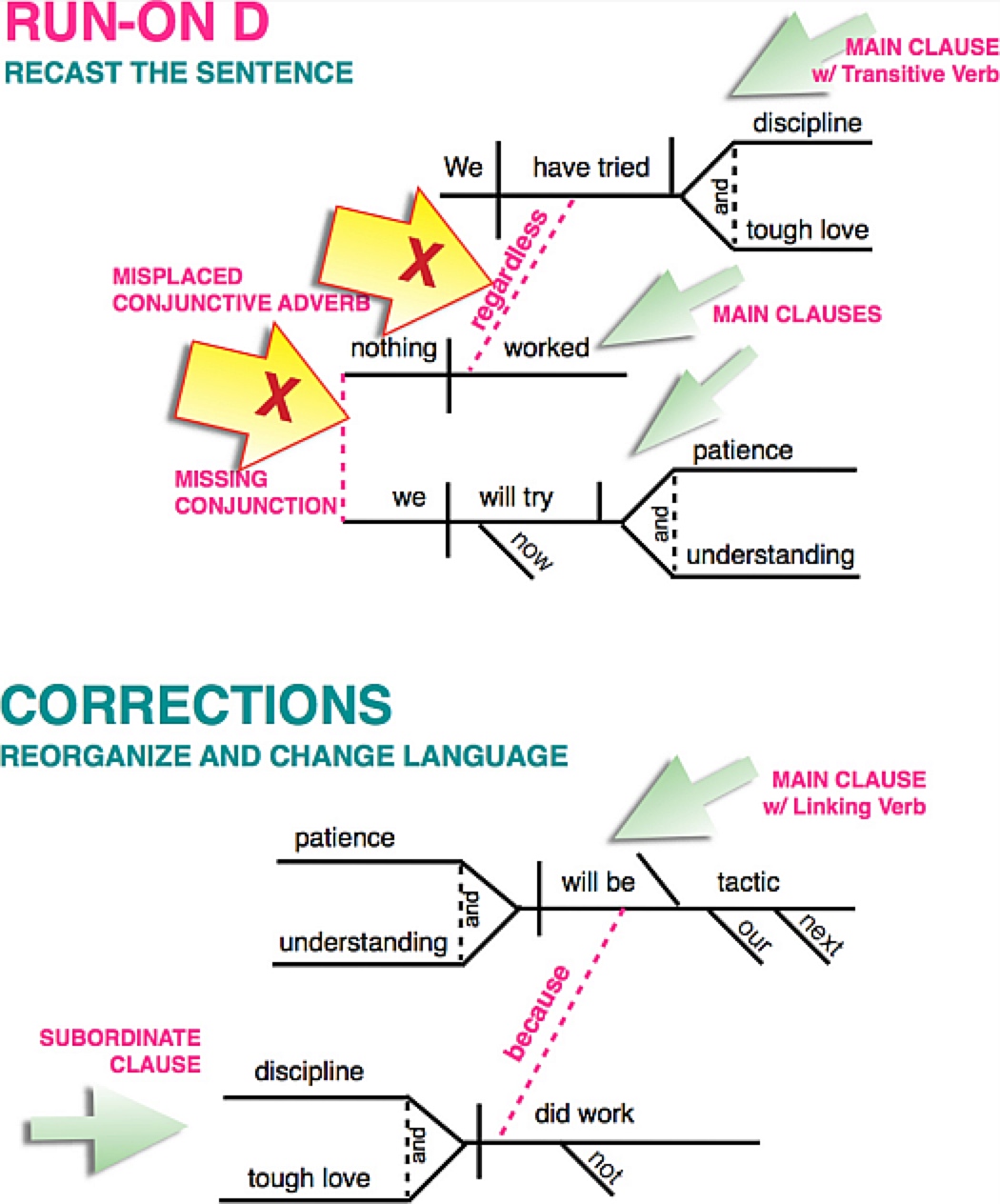
Karl J Sherlock
Associate Professor, English
Email: karl.sherlock@gcccd.edu
Phone: 619-644-7871
 TOPICS ON THIS PAGE
TOPICS ON THIS PAGEStudents unfamiliar or uncomfortable with the concept of Run-On sentences will sometimes mistake any long sentence for an error of grammar or sentence structure. However, sentence length has nothing to do with whether or not a sentence is right or wrong. The following, for instance (#2 in the Pop Quiz above), is the preamble to the U.S.Constitution:
It may, at first, seem like a big, long compound sentence, but in truth it contains only one independent clause: "respect . . . requires that." The rest of the sentence contains one subordinate clause beginning with the word "When"; one noun clause beginning with the words "they should declare"; several infinitive phrases; and, lots of prepositional phrases. In short, this example is a pretty basic complex sentence. It's only difference from most is that it's long and involved. Involved and complex ideas require an involved and complex sentence structure to contain them. That's why complex and compound-complex sentences exist. Never assume that a long sentence is incorrectly written until you examine the actual grammar of it.
The other mistake students frequently make is in confusing a rambling sentence with a Run-On sentence. A lot of sloppily written explanations on-line add to the confusion. While it is possible for a rambling sentence to be a Run-On sentence as well, these are distinctly different issues. "Rambling" is always a matter of composition, while "Run-On" is, without exception, an error of grammar. "Rambling" is sometimes open to interpretation, while "Run-On" is not. The following is a rambling sentence, but its grammar is beyond reproach:
This meandering sentence belies a wandering mind, not a poor command of grammar. Every subordinating and coordinating conjunction in it is where it's supposed to be. The issue is merely one of style: we don't like compound-complex sentences to be this compounded. There are seven independent clauses conjoined in the sentence, and within those are subordinate clauses and even noun clauses. On top of everything, the sentence takes you on a circular journey: it ends where it starts, on the matter of showing up late, but it strikes out on a number of tangents in the middle. This is what teachers mean by "convoluted" writing: writing that twists and tangles, and as a result becomes awkward in content (but not necessarily awkward in grammar).
A sentence that runs on does so by running together two or more independent clauses without proper coordination. To put it succinctly, a Run-On sentence is a failed Compound Sentence because it's missing an important part of speech and/or its corresponding punctuation. There are three types of Run-On sentences.
two or more independent clauses strung together without a comma and a coordinating conjunction.
two or more main clauses strung together WITH a comma, but WITHOUT a coordinating conjunction.
two or more main clauses sharing one or more parts of speech.
Editing Marks and Notations
|| (two vertical lines, side-by-side, not to be confused with the parallelism mark, "//") fused
c.s. (comma spliced); c.f. (comma fault)
R-O
For Grammatically Entangled Run-Ons
syntax
awk
mixed constr. (mixed)
Correction Method: Untangle
When a sentence "doubles-up" the grammatical role of a word or phrase, it causes grammatical entanglement, which is the most awkward variety of Run-On sentence. Use one of the following techniques to untangle this grammatical "knot":
Examples

Correction Method: Separation or Coordination
Use one of the following techniques to fix the Run-On while keeping both clauses independent:
Examples

Using Semi-Colons
Because semi-colons can be substituted for coordinating conjunctions and their commas, they are yet another possible solution to the problem of run-on sentences. (More information about semi-colons can be found in "Internal Punctuation.") Because they're punctuation, rather than a part of speech, you wouldn't put them on a sentence diagram any sooner than you would put a period or a comma. However, the function of a semi- colon would still be represented on a diagram by the same vertical dashed line used for a coordinating (or correlative) conjunction, just without any word attached to it. Semi-colons should be used sparingly; however, if you are new to them, or you're not well practiced with them, here are a few helpful rules:
a. A semi-colon can be used to conjoin a minimum of two independent clauses:
b. Semi-colons aren't used with coordinating conjunctions; if you want to use a coord. conj., change the semi-colon to a comma instead:
c. Frequently, semi-colons are followed by a conjunctive adverb:
Correction Method: Subordination
Use one of the following techniques to make one clause dependent, while keeping the other independent:
Examples

Correction Method: Recast
When a Run-On sentence is also convoluted or awkward, start over by recasting the sentence using the following techniques:
Examples

Karl J Sherlock
Associate Professor, English
Email: karl.sherlock@gcccd.edu
Phone: 619-644-7871